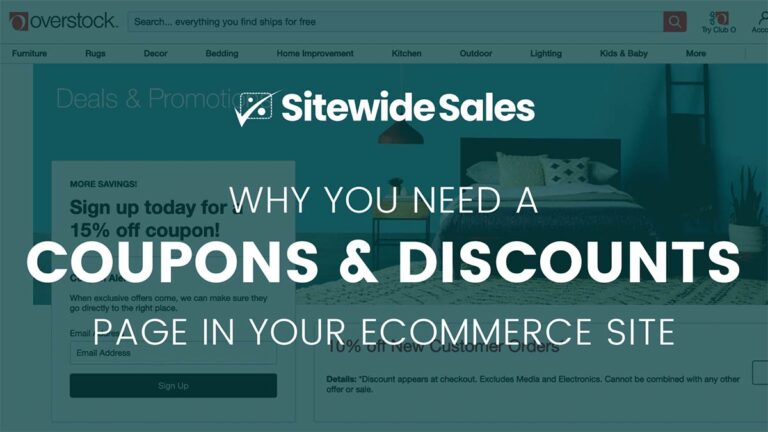In the competitive e-commerce landscape, coupons and discount codes play a crucial role in attracting customers and boosting sales. But running sales is a waste of time if you never take a moment to analyze your discount strategy.
While offering a deal is simple, determining its success requires more than just eyeballing the sales numbers. Let’s look at 6 metrics and 8 real-world methods you can use to analyze your discount strategy.
Introduction to E-commerce Sales Analysis
For solopreneurs competing in the noisy e-commerce market, the ability to effectively analyze discount strategy is a game-changer.
This analysis isn’t just about tracking total sales numbers. It’s about understanding what makes a sale good (worth your time) or bad (a waste of time or damaging to your brand).
When you take a moment to analyze your discount strategy, you get benefits like:
- Precision Decision-making: Analyzing sales data allows for more accurate and informed business decisions.
- Operational Efficiency: With typically tight budgets, solopreneurs need to maximize their return on every dollar spent. Doing even an hour of sales analytics helps you pinpoint areas of improvement: the most bang for your buck and your precious time.
- Ensuring Profitability: Sales events, though enticing, often involve slashing prices. A thoughtful sales strategy ensures that these price reductions don’t harm overall profitability.
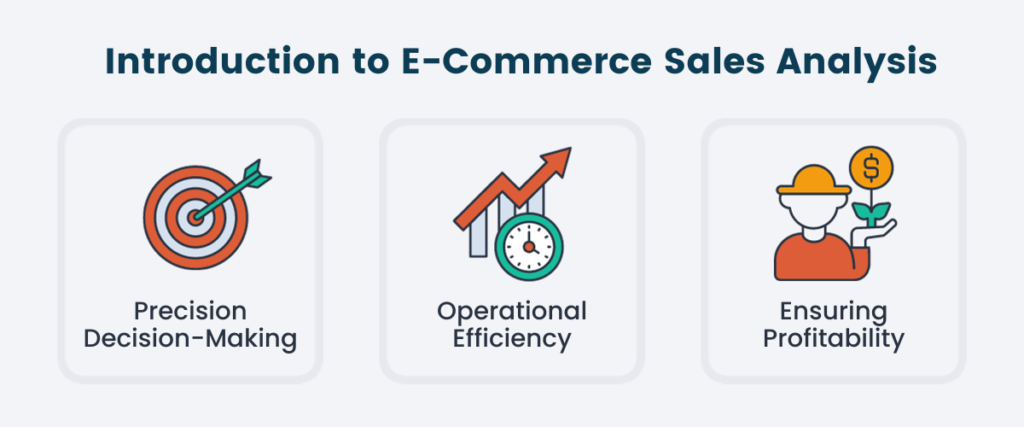
Decoding Common Sales Events
Different sales events offer different opportunities for you as an ecommerce brand. It’s important to try some mix of sale events so that you can get a true picture of what types of sales work best for your business.
Sitewide or Flash Sales:
- Characteristics: Sitewide or ‘Flash Sales’ are time-bound, often unexpected, and offer significant discounts.
- Benefit for Small E-stores: Flash sales can generate buzz quickly and drive traffic, making them particularly advantageous for smaller stores to capture audience attention.
Black Friday & Cyber Monday:
- Significance: These events level the playing field, allowing solopreneurs to compete toe-to-toe with larger retailers. The buzz around these events can be harnessed to get substantial traction.
Seasonal and Holiday Sales:
- Strategic Advantage: These sales events, spread throughout the year, offer solopreneurs the chance to maximize returns without stretching resources thin.
- Targeting Customer Needs: By aligning products and offers with specific times of the year, solopreneurs can cater directly to evolving customer requirements, making each sale event uniquely effective.
Sales to Introduce Something New:
- Objective: Launch a new product or feature and gauge its acceptance.
- Benefit for E-stores: Introducing new items during a sale can attract both loyal customers and new prospects curious about the latest offerings. It also provides immediate feedback, helping businesses fine-tune the product based on early reactions.
Discounts to Move Stale Inventory:
- Purpose: Clear out old stock that hasn’t been moving, making way for new inventory.
- The Advantage: Reducing stale inventory during sales not only improves cash flow but also rejuvenates the store’s catalog, making it more appealing to customers.
By taking the time to analyze discount strategy across these sales events, solopreneurs stand to gain not just in terms of revenue, but also in understanding their customer base and refining their sales tactics for future growth.
Remember Why You Ran the Sale
When you analyze discount strategy, you need to remember the primary reason for your sale. Not every sale can be compared equally to other sales periods or your full price order history.
Each sale has to have a distinct intention, for example:
- Brand Awareness: Introducing new customers to your brand.
- Immediate Profit: Capitalizing on popular items or trending demands.
- Subscription Base Boost: Attracting more subscribers, possibly at a reduced first-time rate.
- User Count Increase: Getting more users onboard, especially for digital platforms or services.
- New Launch: Introduce a new product or service at a discounted rate or offer a special price for the first few customers.
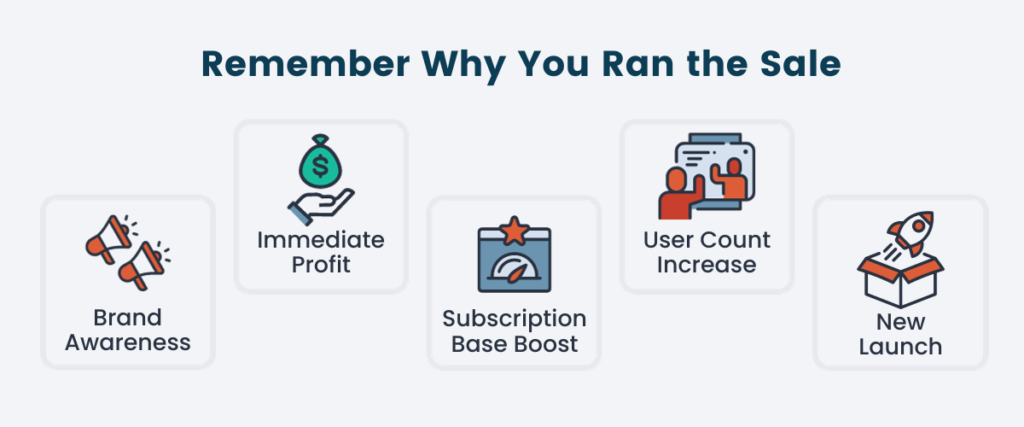
Whether your sale’s objective is pure profit, a quick injection of cash, or to retain more users, the reason you ran the sale significantly influences how you analyze your discount strategy and measure success.
The rest of this guide shares metric-based and real-world ways to analyze sale performance. Some of these methods will ask you to “compare with previous sales or periods.”
When you take the example of a sale to introduce a new product, the sale’s reason matters a ton. Always adjust the analysis framework you choose based on your promotion’s objective.
Metric-based Approaches to Analyze Discount Strategy
Successful e-commerce sales analysis hinges on understanding and measuring the right metrics.
I personally don’t love formal metrics. But there are a lot of people out there that will tell you these numbers, and keeping a close eye on them, is mission critical.
If you’re a metrics lover, here’s a list of the popular acronyms you can use to analyze sales performance and customer behavior, especially during discount events.
Three Essential Metrics For Metrics Lovers
- Conversion Rates: If your conversion rate is healthy, it’s a clear sign your discount strategy resonates with your audience.
- Average Order Value (AOV): Keep an eye on this metric, especially during sales. Techniques like bundling products or offering upsells can drive up the AOV, resulting in higher revenue.
- Cart Abandonment Rates: A high cart abandonment rate is a red flag. So figure out why: are you having website issues? Is your shipping policy unclear? Addressing the “why” can substantially increase your next promotion’s performance.
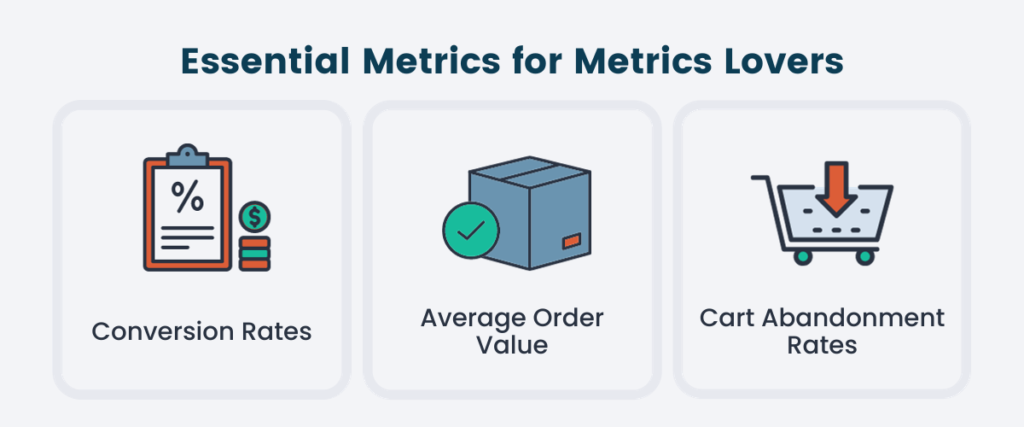
Four Advanced Metrics for In-Depth Discount Strategy Analysis
- Customer Lifetime Value (CLV): Are the customers acquired during sales contributing to long-term revenue? A decrease in CLV during sales might indicate a bump in one-time buyers.
- Flash Sale Metrics: Understand buyer behavior during flash sales by considering metrics like the time taken for the first purchase and the rate of repeat buyers.
- Profitability Analysis: Look beyond revenue. Deductions, returns, and net earnings give a clearer picture of actual profits. Did these profitability factors change during the sale? That’s how you determine true sales success.
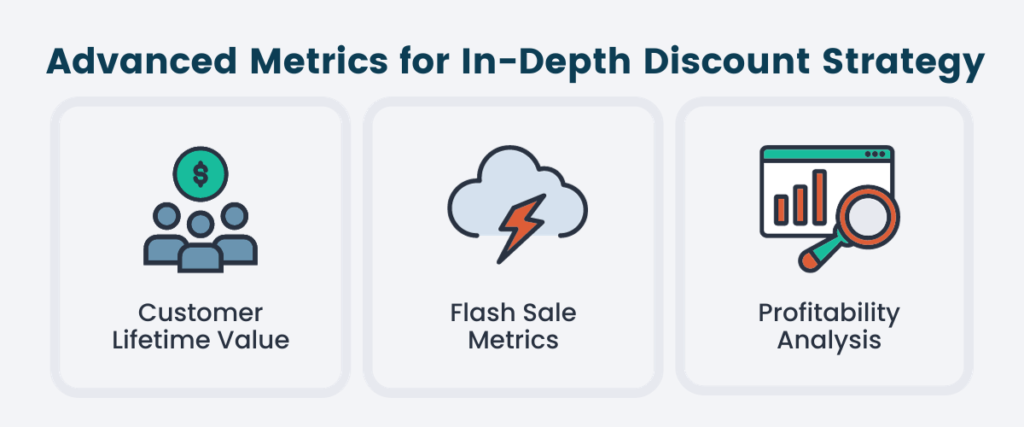
We’ve got even MORE metrics for people running a membership site in this in-depth article on Membership KPIs at Paid Memberships Pro. Similarly, WooCommerce has a guide on e-commerce metrics in their blog here.
Hold the Acronyms: Eight Real-World Ways to Analyze Discount Strategy
While metrics and data offer concrete ways to measure success (and flashy numbers to tell people about on Twitter), it’s equally important to apply real-world context.
Here’s how to dissect and analyze your discount strategy using relatable and actionable methods:
1. Analyze the Total Profit from the Sale to a Previous Similar Period
- How to Get This Data: Compare your profit margins during the sale to a similar duration in a non-sale period. Tools like Google Analytics or your e-commerce dashboard likely provide historical data which can be compared side by side.
- Why It’s Important: This provides a clear picture of whether your discounts led to a net positive income or if the reduced prices simply increased sales without significant profit. Did you leave money on the table?
- Impact on Future Sale: Understanding this helps in pricing strategies. If discounts significantly improve profits, it indicates that the price elasticity of demand is favorable for discounts. However, if profits don’t increase comparably, you might reconsider the depth of discounts in future sales.
2. Compare Sale Revenue to Another Previous Sale
- How to Get This Data: Use your sales automation platform’s sales report to fetch data for revenues during different sales. Comparing these figures gives you a relative performance metric.
- Why It’s Important: This comparison shows the effectiveness of each sale and any external factors that might have affected one sale over another.
- Impact on Future Sale: Recognizing patterns, such as better performance during holiday seasons or specific months, helps plan and optimize future sales events.
3. Compare New Unique Customer Growth to a Previous Period
- How to Get This Data: Check user acquisition data. Platforms like Google Analytics segment new vs. returning users, giving a snapshot of new customer acquisitions.
- Why It’s Important: Sales shouldn’t just boost revenue; they should grow your customer base. A successful sale attracts new customers who might buy at full price in the future.
- Impact on Future Sale: Understanding customer acquisition rates during sales helps tailor marketing efforts to either retain existing customers or attract new ones.
4. Did you make headway in moving stale inventory or overstock?
- How to Get This Data: Track inventory levels before and after the sale. Inventory management systems or even manual stock takes can offer this data.
- Why It’s Important: Sales help clear out old inventory, making space for new products and reducing holding costs.
- Impact on Future Sale: Understanding which products moved quickly during sales provides insights on product demand and helps in future product procurement or production.
5. Did you get useful backlinks/mentions that grew awareness?
- How to Get This Data: Use tools like UberSuggest, Moz, Ahrefs, or SEMrush to track backlinks and brand mentions.
- Why It’s Important: Backlinks and mentions boost brand visibility, improve SEO, and build credibility.
- Impact on Future Sale: A surge in brand awareness can lead to increased traffic and potential sales in subsequent campaigns.
6. If the sale was for a subscription, what’s the net effect on your monthly revenue?
- How to Get This Data: Subscription management tools, like Stripe or ProfitWell, offer insights into Monthly Recurring Revenue (MRR).
- Why It’s Important: A sale might get many subscribers on board, but at a reduced rate. It’s essential to know if this positively affects your MRR in the long run.
- Impact on Future Sale: Understanding MRR impacts helps in determining the viability of offering subscription discounts in the future.
7. Did the sale create returning customers or single-use customers?
- How to Get This Data: Examine your sales and customer data post-sale. Identify customers who made a purchase during the sale and check their purchase history. If their purchase during the sale was their only transaction, and what they bought likely implies they won’t be back, label them as ‘single-use’ customers. Conversely, track those who bought something that will likely mean a repeat purchase (like printer ink), and mark them as potential loyal customers.
- Why It’s Important: Understanding the nature of customers acquired during a sale gives insights into the sale’s long-term value. Returning customers contribute more to lifetime value and profitability, whereas single-use customers might indicate the sale didn’t resonate as intended or didn’t effectively introduce your brand value.
- Impact on Future Sale: If a significant portion of customers from a sale are single-use, you might need to rethink the depth of discounts or re-evaluate post-sale engagement strategies. On the other hand, a high returning customer rate can be a positive indicator to replicate or expand upon a particular sales strategy in the future.
8. Was your sale on a single hot product? Did people buy more full price things in the same order?
- How to Get This Data: Delve into the order details during the sale period. Identify orders that included the discounted product and inspect the other items within the same order. If customers added other full-priced items, you’ll get a clear picture of the sale item’s pull and its influence on other purchases.
- Why It’s Important: Offering a hot product at a steep discount can serve as a loss leader – an item sold at a loss to attract customers. If the discounted item entices customers to buy other full-priced items, it indicates the strategy’s success. It also offers insights into the product combinations that resonate with your audience.
- Impact on Future Sale: If the data shows that the hot product successfully drives purchases of other full-priced items, this tactic can be employed in future sales. Conversely, if customers predominantly buy only the discounted item, consider strategies to upsell or cross-sell more effectively.
Each of these real-world methods to analyze discount strategy gives a holistic view of the sale’s impact. It’s not just about numbers; it’s about understanding the tangible and intangible benefits a sale brings to the table.
Concluding Thoughts and Next Steps
The insights you gain from analyzing a discount or promo is only useful if you take action. After analyzing, plan your next sale. Adjust, refine, and innovate based on data.
By understanding and implementing these analytical strategies, solopreneurs and DIY website creators enhance their discount strategies, leading to more successful sales events.
How do you analyze your discount strategy? Tweet about this article and include your thoughts.

